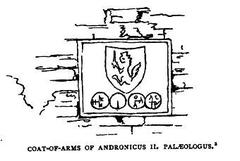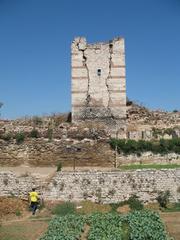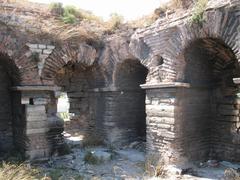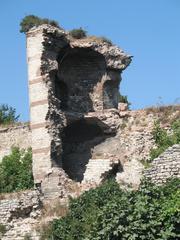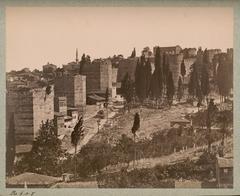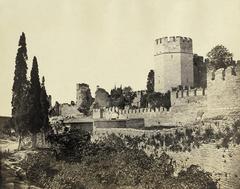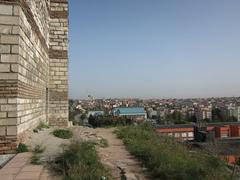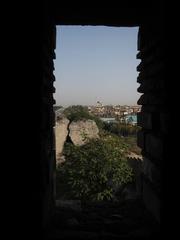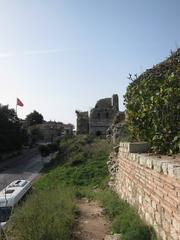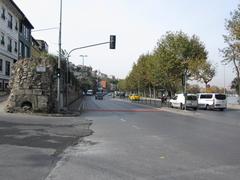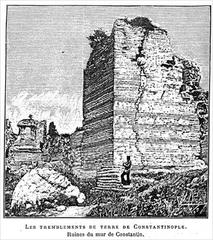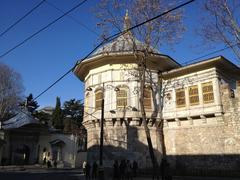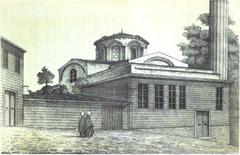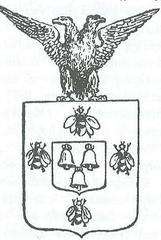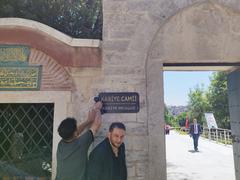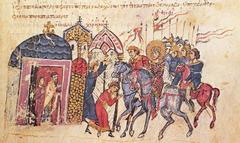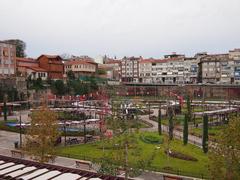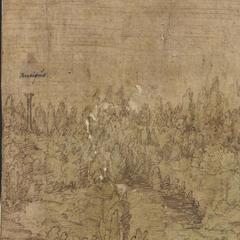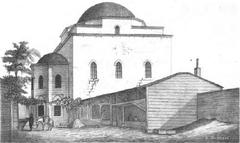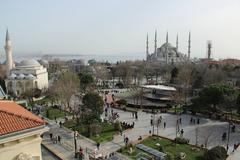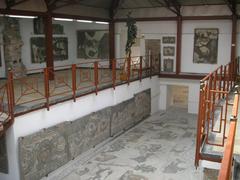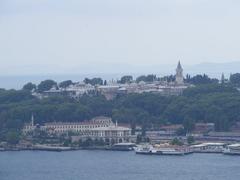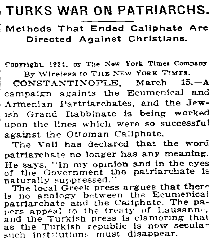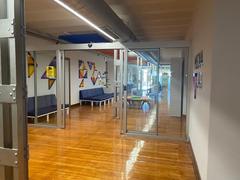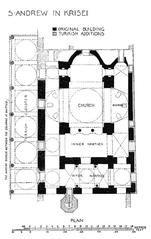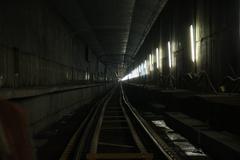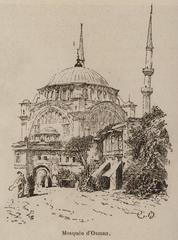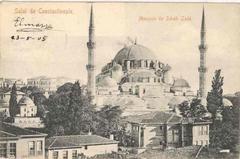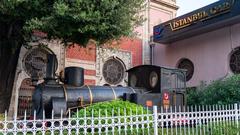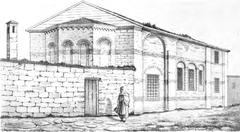
Visiting the Walls of Constantinople in Fatih, Turkey: Guide, Tickets, Hours, and Tips
Date: 14/06/2025
Introduction
The Walls of Constantinople, famously located in Istanbul’s Fatih district, are among the city’s most enduring historical monuments. Constructed primarily during the reign of Emperor Theodosius II in the early 5th century CE, these fortifications—known as the Theodosian Walls—served as the main defensive barrier of the Byzantine capital for over a millennium. Their architectural brilliance and strategic importance are evident through centuries of successful defense against invasions, culminating in the eventual Ottoman conquest in 1453. Today, the walls represent not only a feat of ancient military engineering but also a living chronicle of Istanbul’s layered history, bridging Byzantine, Ottoman, and modern Turkish narratives. Visitors can explore extensive stretches, discover monumental gates and towers, and immerse themselves in the city’s vibrant past, all while enjoying panoramic views and engaging visitor experiences (travelstoreturkey.com, nomadicniko.com, oui.hypotheses.org).
Table of Contents
- Origins and Historical Development
- Architectural Features and Military Engineering
- Key Sections and Gates
- Visiting Information: Hours, Tickets, and Accessibility
- Walking Routes and Visitor Centers
- Nearby Attractions and Local Experiences
- Preservation, Restoration, and Modern Significance
- Frequently Asked Questions (FAQ)
- Conclusion and Visiting Tips
- References
Origins and Historical Development
The first fortifications of what would become Constantinople date back to the city’s founding as Byzantium by Greek settlers in the 7th century BCE. With the city’s re-founding as Constantinople by Constantine the Great in 330 CE, the need for stronger defenses became clear. The most significant expansion occurred under Theodosius II, whose double-walled system—spanning approximately 6.5 kilometers from the Sea of Marmara to the Golden Horn—set a new standard in military architecture (travelstoreturkey.com). Over the centuries, the walls were repeatedly repaired and reinforced, not only by the Byzantines but also by the Ottomans after their conquest of the city.
Architectural Features and Military Engineering
Defensive Design
The Theodosian Walls are celebrated for their sophisticated, multi-layered defense system:
- Moat: Up to 20 meters wide and 10 meters deep, with a retaining wall.
- Outer Wall: Approximately 2 meters thick and 8.5 meters high, designed to absorb the first wave of attacks.
- Peribolos (Terrace): A space between walls for troop movement.
- Inner Wall: Up to 12 meters high and 5 meters thick, with 96 towers spaced 55–77 meters apart for archers and artillery (Ancient Engineering Marvels).
Materials and Construction
Limestone, brick, and mortar were used in alternating bands for strength and flexibility. Mortar played a critical role in absorbing the shock from projectiles, and the craftsmanship of Byzantine builders is evident in the durability of these structures.
Towers and Gates
Regularly spaced towers (over 90 in total) provided elevated positions for defense and observation. Monumental gates, such as the Golden Gate (used for imperial processions), Edirnekapı, Topkapı, and Yedikule, were fortified with double doors, flanking towers, and portcullises (GPSmyCity).
Sea Walls
Complementing the land defenses, the sea walls along the Marmara Sea and the Golden Horn were lower but robust, often reaching heights of 12 meters and reinforced with towers. These protected the city from naval attacks and controlled harbor access (Ancient Engineering Marvels).
Key Sections and Gates
- Theodosian Walls: The main landward walls, best preserved between Yedikule and Edirnekapı, are a highlight for visitors.
- Golden Horn Walls: These northern defenses protected the vital harbor area and included significant gates like Balat and Eğrikapı.
- Sea Walls: Facing the Bosphorus and Marmara, these walls integrated with the city’s topography for enhanced protection.
- Major Gates: Notable entrances include the Golden Gate, Topkapı, Edirnekapı, Belgradkapı, Mevlanakapı, Silivrikapı, and Yedikule (nomadicniko.com).
Visiting Information: Hours, Tickets, and Accessibility
Opening Hours
- General Sections: Open daily, generally from 9:00 AM to 6:00 PM; hours may extend in summer. Some sections might be closed for restoration.
- Visitor Centers (Belgradkapı, Mevlanakapı, Silivrikapı): Typically 10:00 AM–6:00 PM (nomadicniko.com).
Tickets & Entry
- Open-Air Walls: Free access.
- Yedikule Fortress/Museums: Tickets required (approx. 20–50 Turkish Lira).
- Visitor Centers: Free admission as of March 2025.
Accessibility
- Terrain: Many sections have uneven ground, steep stairs, and limited wheelchair access.
- Facilities: Restrooms and cafés are available at select visitor centers.
Getting There
Istanbul’s public transport—tram, Metrobus, Marmaray suburban rail, and city buses—makes the walls easily accessible. Major gates like Topkapı and Edirnekapı are close to transit stops (istanbuljoy.com).
Walking Routes and Visitor Centers
Self-Guided Walking Route
- Route: From Ayvansaray (Golden Horn) to the Marble Tower (Marmara Sea), approximately 7 km (2–4 hours).
- Highlights: Edirnekapı, Topkapı, Belgradkapı, Silivrikapı, Mevlanakapı, and Yedikule Fortress.
- Map Resources: Downloadable maps and interactive guides are available online (awaygowe.com).
Guided Tours
- Advantages: Access to restricted areas, expert commentary, and historical context.
- Booking: Through local agencies or online platforms (theartoflivinginturkey.com).
Nearby Attractions and Local Experiences
- Yedikule Fortress: Southern terminus, with panoramic views and historical displays.
- Panorama 1453 History Museum: Near Topkapı Gate, featuring immersive exhibitions on the Ottoman conquest.
- Tekfur Sarayı (Palace of the Porphyrogenitus): Restored Byzantine palace near the northern end.
- Sultanahmet and Hagia Sophia: Walking distance to Istanbul’s most famous landmarks.
Neighborhoods along the walls are lively, with markets, cafés, historic mosques, and local culture. Cultural events and art exhibitions are frequently held at visitor centers, especially during summer (nomadicniko.com).
Preservation, Restoration, and Modern Significance
The Walls of Constantinople are UNESCO World Heritage-listed and subject to ongoing restoration by Istanbul’s municipal authorities. These efforts focus on maintaining structural integrity, enhancing visitor access, and revitalizing adjacent neighborhoods. As living monuments, the walls act as both historical landmarks and active spaces for education, recreation, and community engagement (oui.hypotheses.org).
Frequently Asked Questions (FAQ)
Q: What are the opening hours?
A: Most sections are open 9:00 AM–6:00 PM; visitor centers from 10:00 AM–6:00 PM. Check for seasonal updates.
Q: Is there an entrance fee?
A: Open-air sections and visitor centers are free; specific museums or Yedikule Fortress require tickets.
Q: Are the walls accessible for people with disabilities?
A: Accessibility is limited in many places due to uneven ground and stairs. Some pathways near main gates are more accessible.
Q: Are guided tours available?
A: Yes, and they’re recommended for deeper historical insight.
Q: How do I get there using public transport?
A: Use the tram or buses to Topkapı, Edirnekapı, or other main gates.
Q: What is the best time to visit?
A: Spring and autumn for mild weather and fewer crowds.
Conclusion and Visiting Tips
The Walls of Constantinople stand as a majestic testament to Istanbul’s enduring legacy, offering visitors a unique blend of history, architecture, and local culture. For the richest experience:
- Plan Your Visit: Early morning or late afternoon provides the best conditions for photography and comfort.
- Explore Both Guided and Self-Guided Options: Guided tours offer expert insights, while self-guided walks allow for flexibility.
- Use Visitor Centers: Access information, rest facilities, and panoramic viewpoints.
- Respect Local Life: The walls border residential neighborhoods—be mindful of local customs.
- Stay Updated: Restoration work and event schedules can affect access; check official sources or the Audiala app before your visit.
For more tips and updates, download the Audiala app, follow us on social media, and explore our related articles on Istanbul’s heritage sites.
References
- Walls of Constantinople: Visiting Hours, Tickets, and Historical Insights on Istanbul’s Iconic Fortifications (travelstoreturkey.com)
- Exploring the Walls of Constantinople: Visiting Hours, Tickets, and Historical Insights (Ancient Engineering Marvels)
- Walls of Constantinople Visiting Guide: History, Tickets, Hours & Tips for Istanbul’s Iconic Fortress (oui.hypotheses.org)
- Visiting the Walls of Constantinople: Hours, Tickets, Tours, and Istanbul’s Historic Sites (nomadicniko.com)
- Istanbul Byzantine Monuments (istanbulclues.com)
- Additional guides: themapchasers.com, GPSmyCity, theartoflivinginturkey.com, istanbuljoy.com, awaygowe.com, Visit Turkey
